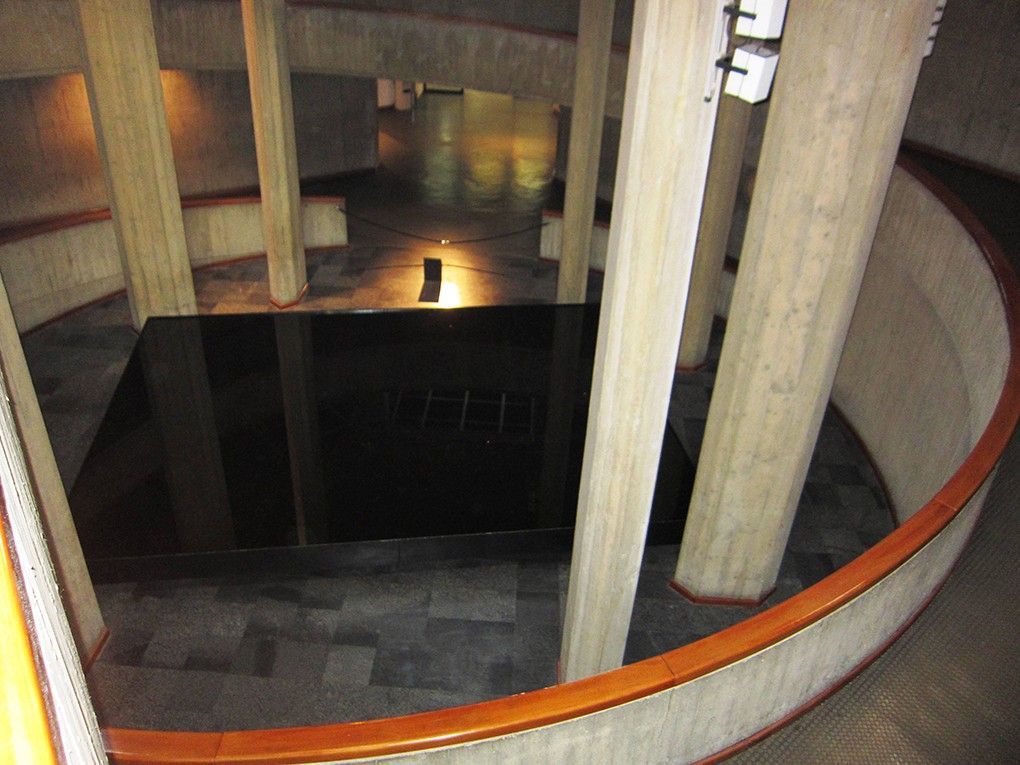The Tehran Museum of Contemporary Art (TMoCA) is a treasure trove of masterpieces by pre-eminent artists – from Renoir, Van Gogh and Gauguin to Picasso, Warhol and Rothko. More than 60 paintings from the collection were scheduled to travel to Berlin for a historic exhibition opening in January. That exhibition has now been cancelled by Berlin’s museum authority because Iran has not allowed the works to leave the country.
 “It is with great regret that we have now felt forced to make this decision,” said Hermann Parzinger, President of the Prussian Cultural Heritage Foundation, which manages Berlin’s state museums. “It was necessary because Iran has as yet still not granted any export permit for the works of art.”
“It is with great regret that we have now felt forced to make this decision,” said Hermann Parzinger, President of the Prussian Cultural Heritage Foundation, which manages Berlin’s state museums. “It was necessary because Iran has as yet still not granted any export permit for the works of art.”
“Further delays in planning the exhibition at the National Museums in Berlin were no longer acceptable,” Parzinger added. He said the foundation remained “committed to cultural exchange, including with Iran, and will continue to encourage this dialogue with appropriate measures.”
The exhibition was to feature paintings by Jackson Pollock, Mark Rothko, and Francis Bacon. They would have hung alongside works of Iranian modern art by Faramarz Pilaram, Mohsen Vaziri Moghadam, and Behjat Sadr inside the Berlin State Museums’ Gemaldegalerie (Picture Gallery). The exhibition was then due to travel to Rome’s MAXXI National Museum of 21st Century Arts, where it was to run for five months (from late March to late August). High-level talks between the German, Italian and Iranian governments had been necessary for the touring show to take place.
German officials said that while Iran’s culture minister and foreign minister were supportive of the exhibition, the export licenses for the artworks required the signature of President Hassan Rouhani. As of late December, the President had still not signed the licenses.
The Tehran Museum of Contemporary Art (TMoCA) was inaugurated in 1977 by Empress Farah Pahlavi and contains more than 1,500 works.

Its prize possessions include Picasso’s giant The Painter and His Model (1927). The museum also owns works by Monet, Pissarro, Toulouse-Lautrec, Rodin, Giacometti, Chagall, Braque, Max Ernst, Magritte, Munch, Hockney, Lichtenstein, Jasper Johns, Henry Moore, and Robert Rauschenberg.
After the 1978-79 Revolution, the artworks were hidden by the museum in a basement vault. Firouz Shabazi Moghadam, who was hired as a driver two weeks before the museum’s opening in 1977, long acted as the vault’s de facto custodian.
Today, only one piece is missing from the original collection: Willem de Kooning’s Woman III. The nude painting was quietly traded in 1994 for the remnants of a priceless 16th-century illuminated Persian manuscript known as the “Shahnameh (Book of Kings) of Shah Tahmasp,” universally recognized as one of the world’s greatest works of art (see sidebar).
TMoCA mounted its first post-Revolution exhibition of Western art in 1999 with a Pop Art show featuring works by Hockney, Lichtenstein, Rauschenberg and Warhol. Though the museum has been open to the public ever since, only a portion of the collection is displayed on site.
[aesop_content color=”#000000″ background=”#D3D3D3″ width=”content” height=”350px” columns=”1″ position=”left” innerposition=”10px, 15px, auto, auto” imgrepeat=”no-repeat” floaterposition=”left” floaterdirection=”up”]The Shahnama of Shah Tahmasp
The Shahnama of Shah Tahmasp, or “Shahnama-yi Shahi,” was commissioned in the 16h century by Shah Ismail – founder of the Safavid dynasty – as a present for his son and successor, Tahmasp.
The 759-page manuscript contained a total of 258 miniatures, and was realized over two decades at the royal atelier in Tabriz by some of the most renowned artists of the time. It was subsequently presented by Shah Tahmasp to the new Ottoman ruler, Sultan Selim II, and remained for centuries in the Ottoman royal library before appearing in Edmond James de Rothschild’s collection in 1903.
The carefully preserved manuscript remained intact until its sale by Rothschild’s grandson in 1959 to Arthur A. Houghton Jr. – heir to the Corning Glass Works fortune, and a longtime chairman of the Metropolitan Museum of Art and the New York Philharmonic Orchestra. Houghton initially acquired the manuscript as a possible gift for Harvard University. He then decided to keep it, had it unbound and photocopied by a respected Harvard curator in 1964, then proceeded to dismember it.
He donated 76 folios with 78 miniatures to the Metropolitan Museum as a tax-deductible gift in 1970. He auctioned seven other folios in 1976 and another 14 in 1988, and sold other pages through art dealers.
When Houghton died in 1990, only 118 miniatures survived. His son Arthur Houghton III chose to sell what was left of the manuscript – meaning 500 pages of calligraphy – in its exquisite binding. Starting in 1991, Arthur Houghton III, a foreign-service official then working for the administration of U.S. President Bill Clinton, engaged in secret negotiations with Iranian officials through Oliver Hoare, a leading London Islamic art dealer.
After three years, an agreement was finally reached. On July 27, 1994, the Shahnama was traded for de Kooning’s “Woman III” on the tarmac of Vienna airport and returned to Iran.
The de Kooning canvas was later sold to David Geffen, founder of DreamWorks SKG, for an estimated $20 million; the Houghton family received $10.5 million of the total for the Shahnama, and the rest went to middlemen. In 2006, David Geffen resold the de Kooning to the American billionaire Steven Cohen for $137.5 million.
[/aesop_content]


